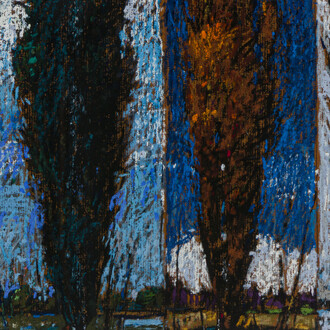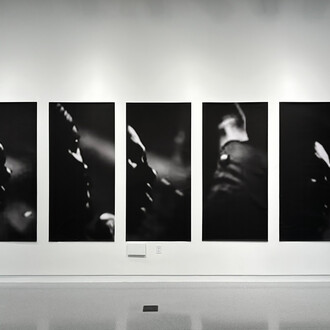The Frist Center for the Visual Arts will present 30 Americans, an exhibition surveying works by many of the nation’s leading African American artists working since the mid-1970s. Often provocative and challenging, the exhibition explores how artists relate their own sense of self to ideas within history, popular culture and contemporary mass media central to American society. 30 Americans will be on view in the Center’s Ingram Gallery from Oct. 11, 2013 through Jan. 12, 2014.
Organized and drawn from the acclaimed Rubell Family Collection in Miami, 30 Americans includes more than 75 works by 31 emerging and established African American artists working within a variety of mediums, from painting and sculpture to photography and video. The exhibition offers a dynamic and thought-provoking intergenerational dialogue by presenting well-known and influential figures such as Jean-Michel Basquiat, Glenn Ligon and Carrie Mae Weems alongside younger ascending artists such as Mickalene Thomas, Kehinde Wiley and Hank Willis Thomas.
While developing their collection, the Rubell family received first-hand accounts from younger artists about the importance of influential, older counterparts, many of whom were already represented in their collection,‖ explains Frist Center Curator Kathryn Delmez. ―We are delighted to bring this superb selection from the Rubell collection to Nashville, especially in the wake of our critically acclaimed Carrie Mae Weems: Three Decades of Photography and Video exhibition last fall,‖ says Dr. Susan H. Edwards, executive director of the Frist Center. ―30 Americans provides a comprehensive portrait of contemporary African American art, offering a rare opportunity to put Weems—with whom our visitors have now become familiar—in context with her peers and successors.‖
Organized thematically, the exhibition explores diverse topics like history, popular culture, community, urban life, and the body, in addition to race. ―The title of the show, 30 Americans,‖ says Ms. Delmez, ―acknowledges that nationality is a statement of fact while racial identity is a highly malleable entity that can be strategically manipulated.‖ According to Ms. Delmez, as key figures in the broader contemporary art community, the artists of 30 Americans have contributed to many of its major developments over the last four decades. They express themselves through a variety of techniques, from the use of language as a powerful and direct mode of communication, to the use of found or unusual materials to convey a particular statement to the use of their own—often transformed—body. For instance, Glenn Ligon (b. 1960) draws heavily on the language of others in both his paintings and neon sign installations to call attention to nuanced aspects of African American history and the contemporary American cultural landscape. His work Negro Sunshine pulls phrasing from Gertrude Stein’s 1909 book ―Three Lives,‖ which reads, ―Rose laughed when she was happy but she had not the abandoned laughter that makes the warm broad glow of negro sunshine.‖ Ms. Delmez explains that, ―By taking the words out of their enigmatic original context and re-presenting them in his own way —the use of neon light being somewhat ironic in this case—, Ligon underscores the absurdity of a cultural stereotype and perhaps even imbues the phrase with a little levity through this act of reclamation.
Kehinde Wiley (b. 1977) likewise subverts African American cultural stereotypes by appropriating historical imagery typically associated with portrayals of wealthy, powerful white men. His works often allude to Old Master paintings, such as Equestrian Portrait of the Count Duke Olivares which owes its composition to a painting of the same name by Diego Velázquez (1599–1660). ―By placing subjects from the streets of Harlem, Brooklyn and other urban locales into classical poses and settings, Wiley inserts urban culture within art-historical conventions to make a provocative statement about history and society,‖ Ms. Delmez says.
Inspired by the social awareness and feminist liberation of the 1970s, Mickalene Thomas’s (b. 1971) glitzy and confident paintings of contemporary African American female subjects redefine the role of women in today’s society. ―Thomas’s subjects, such as the woman featured in Baby I Am Ready Now, are empowered, emotive and fearless,‖ explains Ms. Delmez. ―She positions sensuality and seductiveness as positive attributes, tools of strength and power.
Conversely, artist Nick Cave (b. 1959) obliterates markers of gender or racial identity through his ―soundsuits,‖ elaborate costumes composed of a wide variety of found or commonplace objects that may be both exhibited and worn in performance. ―Among Cave’s influences are African masquerades, in which the performer’s individual identity is taken over by the costume he or she wears,‖ notes Ms. Delmez. ―In the context of the artist’s soundsuits, familiar discarded and repurposed objects come to life and offer a departure from our everyday environment; they suggest a time and place where race and gender don’t really matter—where people are just people.


















